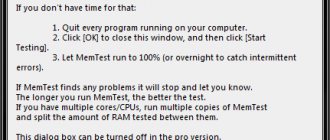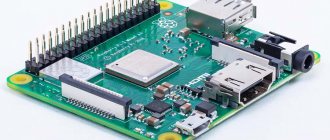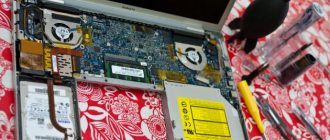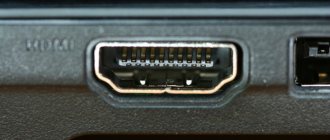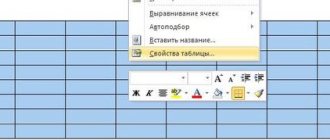Many video cards with chipsets from Intel, ATI and nVidia can use part of the RAM if there is not enough video memory. This allows you to run applications for which the built-in memory of the video card is not enough.
Sponsored by P&G Articles on the topic “How to add video memory from RAM” How to increase the memory of a video card How to increase the RAM of a video card How to increase the memory of a video card
Instructions
Check the total amount of memory allocated to the video card. To do this, run the dxdiag utility built into Windows, go to the “Screen” tab and find the “total memory” value on it. This value is the total amount of memory that the video card can use - the sum of the amount of built-in memory and the amount allocated from the computer's RAM. If you are not satisfied with this value, you can try to change it.
Launch the Control Panel of your video card. In the left panel, find the “UMA Frame Buffer” menu item. The name may vary depending on the video card model. Set the slider to its maximum value. If there is no such menu in the “Control Panel” of the video card, you can try to change the amount of allocated video memory through the BIOS.
Enter the BIOS of your computer or laptop. To do this, immediately after turning on the computer, press and hold the “Del” key on the keyboard. If booting continues as usual, try the F2 and Esc keys. If you are unable to enter the BIOS, please refer to the documentation supplied with the device, as... The keys reserved for entering the BIOS may vary depending on the computer model.
Now you need to find the parameter responsible for the amount of RAM allocated for the video card. Depending on the computer model, it may be called: “BIOS VGA sharing memory”, “VGA memory”, “Video memory”, “AGP Aperture Size”. Other names are also possible. The absence of these or similar menu items in the BIOS may mean that your motherboard does not support setting the maximum amount of allocated video memory. In this case, video memory is allocated automatically as needed. How simple
Other news on the topic:
Video cards can be integrated (built into the computer's motherboard) or discrete. The integrated video card does not have its own memory and uses the computer's RAM. Such a board has much less power compared to discrete cards. But that doesn't mean she
The amount of video memory is very important for high performance in modern video games, since they require 256 megabytes of video memory to run properly. If there is not enough of it, video games will either not launch at all or will be very slow, making them impossible to play.
It stores the data necessary to reproduce graphics. If there is insufficient video memory, the quality of graphics deteriorates, incorrect display or periodic freezing of the broadcast is possible. In such unpleasant situations, you begin to think about how to increase the memory of your video card.
Video cards have different characteristics
Of course, you can start solving the problem by increasing the RAM on your graphics card. Although, if the video card’s bandwidth is not enough, an operational one will not solve the problem.
First of all, you need to understand how to find out the memory of a video card on a computer. To do this, you need to determine the installed graphics card. The appropriate method for increasing memory will depend on the type of adapter. As a rule, portable devices (ultrabooks and netbooks) are equipped with integrated compact video adapters. They are also available in budget laptops. A sign of working with such a board will be the joint arrangement of connectors:
Powerful laptops and desktop computers already come with external graphics cards, which are called discrete. They are quite a productive device with its own cooling system.
How to use all video memory on Windows 7. How to add video memory from RAM?
More and more modern programs and games place increased demands on computer hardware, in particular, graphics adapters. Insufficient video card memory leads to many applications not only freezing, but also not launching at all. And here the acute question arises of how to increase the amount of video memory, and whether it is possible to do this. Next, we will consider several options that allow, if not to increase it, then at least to use it most optimally.
How much VRAM do I need?
It is clear that there is no ideal amount of VRAM for everyone. However, we can provide some basic guidelines on how much VRAM you should target for your graphics card.
1-2GB VRAM: These cards typically cost less than $100. They offer better performance than integrated graphics, but cannot handle most modern games at above-average settings. Buy a card with this amount of video memory only if you want to play older games that don't work with integrated graphics. Not recommended for video editing or 3D work.
3-6GB VRAM: These mid-range cards are good for moderate gaming or some intensive video editing. You won't be able to use the ultra-crazy texture packs, but you can expect to play modern games at 1080p resolution without too much trouble. Get a 4GB card if you're short on cash, but 6GB is a better option if you can spare it.
8GB VRAM or higher: High-quality graphics cards with this much RAM are designed for serious gamers. If you want to play the latest games at 4K resolution, you need a card with more VRAM.
What is the role of video memory in the system
There is probably no need to say that the memory of a graphics adapter is in some ways very similar to the main RAM of a computer system.
It is assigned almost the same functions of loading the main software components of programs and applications with the transfer of calculations to the graphics processor. It is clear that with a small volume, no matter how hard you try, you will not be able to load more than what it is designed for. Therefore, many games not only function with malfunctions, but sometimes do not work at all. But the problem of how to increase the video memory of a video card, as it turns out, can be solved quite simply. True, this cannot be called an increase, since the physical size of video memory does not change.
What's the difference between integrated graphics?
So far, our discussion has assumed that you have a dedicated graphics card in your PC. Most people who build their own computer or buy a pre-built gaming PC have a desktop with a graphics card. Some more powerful laptops even include a graphics card.
But budget desktop or off-the-shelf laptops don't have graphics cards—instead, they use integrated graphics.
Integrated graphics solution
means the GPU is on the same die as the CPU and shares your regular system memory instead of using its own dedicated VRAM. This is a cost-effective solution that allows laptops to output basic graphics without the need for a graphics card, which requires a lot of space and power. But integrated graphics are bad for games and intensive tasks.
How powerful your integrated graphics are depends on your processor. New Intel processors with Intel Iris Plus Graphics are more powerful than their cheaper and older counterparts, but still pale in comparison to dedicated graphics.
As long as your computer is a few years old, you should have no problem watching videos, playing low-intensity games, and running basic photo and video editing applications with integrated graphics. However, playing the latest graphically impressive games with integrated graphics is basically impossible.
Determining the type of graphics adapter
Before searching for a solution to the problem and the answer to the question of how to increase video memory, you need to decide on the type of graphics adapter installed in the system.
They come in two types: integrated (built into the motherboard) and discrete (inserted into special slots).
Visually, an integrated adapter can be identified by the presence of nearby HDMI, USB, LAN, etc. connectors.
You can get more detailed information in the “Device Manager” by calling it either from the “Control Panel” or from the “Run” console (Win + R) with the command devmgmt.msc.
However, the most complete data is contained in the DirectX dialog box, called up from the Run menu with the dxdiag line. All information will be presented on the “Screen” tab. By the way, this is the only way to find out the main characteristics of integrated video adapters.
For owners of NVIDIA video cards
The manufacturer of this graphics accelerator has created a special “Control Panel” for its device. You just need to log in and do the following:
- Click "Help".
Next, go to the “System Information” section;- After that, go to the “Display” tab, where you can see the required parameters.
How to increase the video memory of discrete cards by increasing performance
First, let's look at the question of how to increase the video memory of a discrete video card. Ideally, of course, the easiest way is to buy a new one, but modern adapters are very expensive, so it’s better to set up what you have.
Based on the fact that today the market offers mainly NVIDIA and AMD/ATI chips, it is worth using the accompanying software, which comes pre-installed when purchasing a PC or laptop.
Also, for Windows systems, in terms of improving performance, utilities like ATITool or MSI Afterburner are perfect, which allow you to gradually increase the clock frequency of the GPU, leaving the memory indicator unchanged.
In addition, you can use programs like Catalyst, PhysX or Riva Tuner, which can optimize the video chip's memory for use in certain games or other applications, freeing up resources.
What tasks do video RAM need?
Before we talk about specific numbers, we should mention which aspects of games and other graphics applications use the most VRAM.
A big factor in VRAM consumption is the resolution of your monitor. Video memory stores a frame buffer that stores the image before and during the time your GPU displays it on the screen. Higher-end displays (such as 4K games) use more VRAM because higher resolution images require more pixels to display.
Besides your display, the textures in the game can greatly impact how much VRAM you need. Most modern computer games allow you to fine-tune the graphics settings
for performance or visual quality.
You can play a game from a few years ago on Low or Medium settings with a cheaper card (or even integrated graphics). But High or Ultra quality or custom mods that make game textures look even better than usual will require a lot of RAM.
Features like anti-aliasing (smoothing out jagged edges) also use more VRAM due to the extra pixels. If you're gaming on two monitors at the same time, it's even more intense.
Certain games may also require different amounts of VRAM. A game like Overwatch isn't too graphically demanding, but a title with a lot of complex lighting effects and detailed textures like Shadow of the Tomb Raider requires more resources.
Conversely, a cheap card with as little as 2GB of VRAM (or integrated graphics) is sufficient to play older PC shooters. Games of that time lacked about 2 GB of video memory.
PS2 emulation speed seems to be GPU dependent. If you have integrated graphics, it may be worth buying a cheaper graphics card.
— setz (@splixel) May 3, 2020
Even if you are not interested in gaming, some popular programs also require a sufficient amount of VRAM. 3D design software like AutoCAD, especially intensive Photoshop editing and high-quality video editing will suffer if you don't have enough video memory.
Frame Buffer Settings
Now let's see how to increase video memory on a laptop. Most modern budget models are equipped with integrated chips.
You can view the parameters of the allocated memory through the “Device Manager”, where you need to select properties from the right-click menu and go to the “Drivers” tab. There is a line of parameters for the UMA frame buffer, where the required value is located. But there may not be such a point, so the question of how to increase video memory must be solved by another method. Which one? BIOS settings that require changing the allocated dynamic memory.
How to increase video memory using RAM (distributed) via BIOS
In the primary I/O system, which is called by pressing certain keys, shortcuts or special buttons, you need to find a section like Video RAM or Shared Memory.
How to increase video memory using these settings? To improve performance, the aperture parameter designated as AGP OverVoltage is changed. It should be remembered that the increase is calculated according to a certain formula. For example, let's take 16 MB of memory on the integrated adapter and 256 MB of main RAM. The result will be 256 MB/(16 MB/2)=32 MB. Here comes an interesting paradox. For 256 MB RAM and 64 MB adapter memory, the increase will be 256 MB/(64 MB/2)=8 MB.
In the VGA Shared Memory (also known as UMA buffer) settings, you need to set the required parameter, but setting the maximum value is not recommended. The best option is to set a value that is only twice the default.
Is it worth doing?
Finally, it should be added that the question of how to increase video memory using software without changing it physically is very conditional, because in the end we are only talking about its most efficient use. In fact, in some ways it is reminiscent of overclocking a graphics adapter. But, if you are already doing this, you need to be very careful, otherwise such actions can only lead to the card failing. At the very least, you should not set the maximum possible peak values of any parameter, although graphics adapters, as well as any other devices, so to speak, have a certain margin of safety.
For computer game lovers, computer configuration is very important. To provide beautiful, high-quality graphics for a regular game or to try modern 3D games, our computer needs a video card. It is found in every laptop and computer, but is divided into different types. How to increase video card memory? First, let's figure out what it actually is.
Don't be maximalists - caution will help preserve your video card
We strongly recommend that you be careful when increasing the memory of your video card; it is better to increase it gradually, without drastic changes. Because under excessive load conditions the card may fail. And don’t forget to make sure that you have enough RAM—after all, it is due to it that the performance of the built-in video card increases.
If your efforts did not allow you to “overclock” the discrete card, all that remains is to replace it. Many older models do not support significant increases in memory and performance.
Increased video card memory can significantly improve the graphics quality and capabilities of the entire system. We looked at effective principles for working with built-in and discrete cards. We are sure that the information on the site will help make your computer more powerful and modern - so do not forget to follow our reviews and recommendations.
Instructions
Turn on your computer. After turning it on, press the Delete button on your keyboard. This will take you to the BIOS menu. Now in this menu you need to find the Video Ram parameter. Based on the hardware you are using and the BIOS version, this setting may be in different sections. Also similar to the Video Ram parameter, the name can be Shared Memory, that is, dedicated memory. Owners of older computers need to take into account that their motherboards may not be equipped with the function of allocating memory from RAM. In this case, the memory of the integrated video card is fixed and cannot be changed in any way.
If you find this parameter, press the Enter key on it and select the desired amount of memory that will be transferred from the RAM. Depending on the model of the built-in video card, the amount of memory may be limited. Once you have selected the amount of memory you need, exit the BIOS. Save your settings before exiting. The computer will restart. After it starts, memory will be added. At the same time, there will be less RAM, or rather, part of it now works for video needs.
If you do not notice an increase in performance with increasing video card memory, then it is better to return the previous board memory indicator. This can be done in exactly the same way.
You can change the operating parameters of many video adapters yourself. Typically, this method is used to increase device performance when working with certain applications.
You will need
- — Riva Tuner;
- — 3D Mark.
Instructions
To successfully overclock your video card, you will need the Riva Tuner program. It was originally designed to work with nVidia devices, but is currently actively used to configure video adapters from other manufacturers. Download this program and install it. If you want to track changes in device performance, then install the 3D Mark application.
If you are a fan of computer games, then before purchasing a laptop for gaming purposes, take an interest in the power ratings of the video card. In addition, to play games and watch movies in HD quality, you will need a video card equipped with a video accelerator. It is worth noting that you cannot change this device in a laptop (to a more powerful one). However, you can try to improve the performance of the video card yourself.
There are two types of video cards in computers: integrated and discrete. If the video card is integrated, you can improve its memory by changing the settings in the BIOS. This can only be done if the laptop has sufficiently powerful RAM. Since integrated cards do not have their own memory, they drain RAM resources. If there is not enough RAM, you should not add video memory at its expense. This will only worsen the performance of the laptop as a whole and reduce its performance. To enter the BIOS, turn on the computer and press the “Delete” button several times in a row. Find the line "Video RAM" and press the "Enter" key. You should see a line in which you can, at your own discretion, determine how much RAM the video card can use. Check the desired value. Next, save the settings and restart the laptop. This operation should increase the memory capacity of the card. If you have a discrete video card, then the method described above is not suitable for you, since these types of video cards are equipped with memory chips and the memory capacity cannot be increased. However, you can get out of the situation. To do this, let's try to increase the speed of the video card memory. First you need to download a program to overclock the memory speed of video cards. For example: ATItool, Riva Tuner, MSI Afterburner. We will consider the further procedure using ATItool as an example, since it is the most convenient to use. After launching it, you will see a start window in which you need to select the “Overclocking” tab. Next, find the “MEMORY CLOCK” menu or in new, Russian-language programs - “Memory speed”. Move the pointer slightly to the right (or up, depending on the interface). Click OK. The new settings can be immediately tested in action. In the program menu, select the “Open 3D window” section. After which the process of testing the video card will begin. You need to monitor the changing images on the screen - if spots or distortions appear, then you have overclocked the memory too much. To set a different value, repeat the algorithm, setting a lower value. If you pass the test successfully, the video card memory copes. You can try to increase the acceleration rate by moving the pointer further to the right. In practice, find out the permissible memory frequency of the card by passing the 3D test. Once you have decided on the maximum value, save the settings.
If all your actions did not bring the desired result, and you need a powerful video card, you will have to buy a new laptop with a more suitable device.
For computer game lovers, computer configuration is very important. To provide beautiful, high-quality graphics for a regular game or to try modern 3D games, our computer needs a video card. It is found in every laptop and computer, but is divided into different types. How to increase video card memory? First, let's figure out what it actually is.
What types of video cards are there?
For example, a video card built into the motherboard, invisible to the user, is called integrated. Discrete is an external video card.
The integrated video card is responsible for the images on our computer screen. It does not have its own memory and borrows it from the RAM. Such memory is quite weak and cannot withstand modern traffic. But gamers found a way out. Let's look at how to increase the memory of the built-in video card. To increase memory, you need to continuously press the Delete key. In the menu that appears on the screen, you must select Video Ram. Then you should hover your mouse over this line and press Enter. Select the volume required to increase. Then save the settings. After restarting the computer, the memory will increase. If after the actions taken the memory has not changed, then it is better to return the previous volume in the same way. But it is worth remembering that this function will be useless if your computer’s RAM is small. In addition to wasting time and effort, this action will worsen the performance of the system.
The discrete video card is installed autonomously and allows you to work with complex graphics. The types of desktop video cards and their memory capacity depend on the cost and manufacturer. But any laptop with an external graphics card will cost much more. A discrete graphics card is characterized by high battery consumption and power consumption. It is impossible to increase the memory of such a video card, since its volume is already set by the manufacturer and built in using a special chip. Now it’s clearer how to increase the memory capacity of a video card?
General video RAM
Remember that, as with regular RAM, more VRAM does not always mean better performance. If your card has 4GB of VRAM and you're playing a game that only uses 2GB, upgrading to an 8GB card won't do anything noticeable.
Conversely, running out of VRAM is a huge problem. If VRAM becomes full, the system must rely on stock RAM and performance will suffer. You will suffer from lower frame rates
, texture pop-ups and other adverse effects. In extreme cases, the game can slow down to a crawl and become unplayable (anything below 30 FPS).
Remember that VRAM is only one performance factor. If you don't have a powerful enough processor, HD video rendering will take forever. Insufficient system RAM makes it difficult to run many programs at once, and using a mechanical hard drive also severely limits your system's performance. And some cheaper graphics cards may use slower DDR3 VRAM, which is inferior to DDR5.
The best way to find out which graphics card and amount of VRAM is right for you is to talk to someone knowledgeable. Ask a friend who knows about the latest graphics cards, or post on a forum like Reddit or Tom's Hardware to see if a particular card will suit your needs.
Increasing the volume
You can increase the capacity of hybrid video cards using the computer's RAM. Hybrid graphics cards are a common feature between internal and external. You can buy a laptop with such a video card at an average price. This card is the best solution for users who, in addition to standard programs, use some graphics programs.
The SLI hybrid has the same properties and high performance. It contains both a discrete and integrated video card. The user himself chooses which card to use. If you have to do simple work with standard programs, then an integrated card is used, which will save battery life. And if the user decides to play a modern 3D game, then he needs to turn on the discrete one.
Before trying to increase the memory of a video card or before buying a laptop, it is advisable to consult a professional who will tell you a computer that suits your requirements and tell you whether it is possible to increase the memory of the video card.
We hope that in the future you will no longer have questions about how to increase the memory of a video card.
Instructions
Check the total amount of memory allocated to the video card. To do this, run the dxdiag utility built into Windows, go to the “Screen” tab and find the “total memory” value on it. This value is the total amount of memory that the video card can use - the sum of the amount of built-in memory and the amount allocated from the computer's RAM. If you are not satisfied with this value, you can try to change it.
Launch the Control Panel of your video card. In the left panel, find the “UMA Frame Buffer” menu item. The name may vary depending on the video card model. Set the slider to its maximum value. If there is no such menu in the “Control Panel” of the video card, you can try to change the amount of allocated video memory through the BIOS.
Enter the BIOS of your computer or laptop. To do this, immediately after turning on the computer, press and hold the “Del” key on the keyboard. If booting continues as usual, try the F2 and Esc keys. If you are unable to enter the BIOS, please refer to the documentation supplied with the device, as... The keys reserved for entering the BIOS may vary depending on the computer model.
Now you need to find the parameter responsible for the amount of RAM allocated for the video card. Depending on the computer model, it may be called: “BIOS VGA sharing memory”, “VGA memory”, “Video memory”, “AGP Aperture Size”. Other names are also possible. The absence of these or similar menu items in the BIOS may mean that your motherboard does not support setting the maximum amount of allocated video memory. In this case, video memory is allocated automatically as needed.
From year to year, personal computer users observe the modernization of the model range of external devices. Sometimes it can be difficult to keep up with all the new products and you have to optimize your existing hardware.
You will need
- ATI Tool Software.
Instructions
It’s worth mentioning right away that increasing the performance of the built-in video card
almost impossible. The overall operating frequency can be increased in the BIOS settings by going to the integrated devices section. It is worth noting that the “integrated video card + processor with graphics” combination will provide greater performance. Such processors are often produced by Intel.
Instructions
Before taking steps to increase video card
s, it is advisable to carry out a set of general measures to increase computer performance.
Update your video card
. Install an antivirus and scan your system disk. Often, removing malware has a greater effect than increasing the amount of memory. Don't use pirated antivirus. To avoid purchasing a subscription, you can use the DrWeb CureIT antivirus utility.
Determine the current amount of memory used by video cards
Ouch.
Run the DirectX Diagnostic Utility. To do this, press the Win+R key combination on your keyboard, enter the line dxdiag in the dialog that opens and press Enter. Go to the "Display" tab. Find the "total memory" line. The numbers opposite it mean the total amount of memory (own and system) that the video card
uses for its needs. If this value is not enough, you can try increasing it.
To increase the amount of system memory allocated for video cards
Yes, open the ATI Catalist Control Center configuration utility.
Find the UMA Frame Buffer value. Set it to the maximum possible value. There is no such setting in nVidia drivers; memory
is allocated automatically.
The only way to change it is to increase the amount of system memory on the computer, which will cause an increase in the amount of memory allocated to the video card
.
Overclocking is not a method of increasing the memory capacity of video cards
s, but can significantly increase its speed.
In order to overclock the hardware, you need to use the appropriate utilities. For ATI this is ATI Tray Tools, and for nVidia the best program is RivaTuner. A forced 3D graphics accelerator will probably require more powerful cooling, because... its heat generation will increase. It is necessary to monitor the temperature of the chip; overheating can lead to irreversible damage to the video card
.
Modern video games require a very powerful computer configuration. The most important component for video games is the computer's video card. The power of a video card, in turn, depends on the speed of the video card processor, the amount and speed of memory. Memory can be increased only in integrated video cards. But there is a way to increase the overall video memory speed.
You will need
- Computer, video card, ATItool program
Instructions
If you have an integrated video card, you can increase the amount of memory in the BIOS. Consider the fact that integrated video cards do not have their own memory at all and all resources are taken from RAM. If
How to increase video memory? This question is asked by many users of personal and mobile computers. Although the answer is not clear, in most cases it is impossible to do such a trick with a video card.
Intel HD Graphics memory capacity
On computers with integrated and discrete graphics cards, the operating system itself switches between them, balancing between performance and efficiency. It works on laptops all the time. First you need to check the amount of allocated graphics memory. Go to Settings by running the command:
ms-settings:
In the command interpreter window (required with a colon), Win + R key combination or through Start.
Go to the System section.
You can also call the Screen Settings in the Desktop context menu. In the first tab, scroll down and click on the Advanced display settings link.
At the bottom, click Video Adapter Properties for Display 1.
In the Video memory used , you can see the amount of memory on the Intel HD Graphics video card.
How to update the map?
New cards from NVIDIA are not suitable for upgrades, which is due to the company's desire to sell more expensive ones. If you don’t believe me, then visit a hardware store in your city. The need to explain why the user is not given such freedom will become clear. But in this article we will try to figure out how to increase video memory.
The user can increase the quality of use of the video card by increasing the quality of memory, not the size (these are different values). In an integrated video card, using BIOS settings, you can increase the amount of megabytes required for the video system, for example, in older laptops and PCs.
Why not, and what will the pros say?
If so, then definitely not. Of course, a computer architect will tell you how to increase video memory: add another chip to the existing ones, and then flash the controller. In this case, there is a high probability that the card will be unsuitable for further use. Even with at least some knowledge of the computer structure and its architecture, such a method cannot be recommended to the user. In 97% of cases, the card will be hopelessly damaged or burned.
On computers with this, you can set a higher value in the BIOS if the maximum has not been reached. Otherwise, there is absolutely no sense in this due to the well-known slowness of the built-in video.
There are no other methods, and if such are found, then there is no need to describe such things. You can, of course, move some of the video memory to regular memory, which will further affect the video performance of your computer.
Difference between new and old
Now, as for how to increase the used video memory on a laptop. In most new devices, the minimum price category costs a large resolution. Therefore, it is impossible to increase the used one; such a trick only worked on early models. Then it was permissible to add several additional ones to the finished board. You can increase the video volume using system memory, but then you will have to do some small calculations and then increase the system memory.
If the motherboard of your laptop has the necessary connector, then how to increase the video memory on the laptop? You just need to insert the external video card into the connector. By the way, there are now adapter modules on sale that connect directly to a mobile computer.
We insert an external video card and enjoy a significant increase. You must remember to log into the pre-installed mother system and disable the integrated video card so that applications do not switch to it automatically.
One at the expense of the other
You can try to solve the problem of how to increase video memory using RAM. First, make sure that the installed modules have enough capacity to transfer some megabytes to video. You can call this method of increasing memory capacity without cost.
Let's try to implement step by step the intention to increase the RAM of a laptop or computer.
- Step number one. We take our laptop and go to the store, we explain to the seller that we want to install a new memory slot.
- Step two. Without much fanaticism, we insert a module into the slot; if we select second-generation memory, but it is not inserted, it means that the equipment has third-generation memory. Remember: when connecting the RAM, you should not be zealous, because you can damage the device!
- And the third step. If we have tried all the modules that the seller showed, then we can be congratulated - we have a rather rare energy-saving RAM (1.35 volts). In ordinary laptops, RAM is designed for one and a half volts.
How much memory can be inserted into a laptop can be found in the manual or on the manufacturer’s official website. It should indicate the number of gigabytes, as well as what generation of memory you will need to look for in stores.
All ways, no other
How to increase video memory? At the moment there are no other options to increase the volume other than those described in this article. In any case, it is better to replace components rather than improve them. As a bonus, we can advise you to properly configure the video card of your iron friend. It’s not for nothing that all the experts say that assembling a computer is always cheaper than buying a new one. However, it is best to collect if you have experience. There is no need to touch on areas where specialized knowledge in architecture or computer programming is required. Sometimes technical issues should be left to specialists.
Restrictions in AMD video card drivers on the size of the available DAG
With each mining epoch using the Ethash algorithm, the size of the DAG data increases by 8 MB. In this regard, sooner or later they stop mining video cards with insufficient memory. In theory, they should stop mining when the total amount of DAG data and memory reserved by the system exceeds the size of the entire video memory. In practice, for AMD video cards, due to the peculiarities of OpenCL technology, as well as drivers, the stop date for mining using the Ethash algorithm comes much earlier.
This is due to the practical implementation of the OpenCL parallel computing algorithm and working with memory in the miner and drivers.
